In the heart of Seoul, just west of Gyeongbok Palace, lies Seochon, the “west village.” The neighborhood has a long, rich history. During the Joseon Dynasty, it was home to members of the royal family, aristocrats, and the literati, and in the modern era, many prominent writers and artists have left an indelible footprint there.
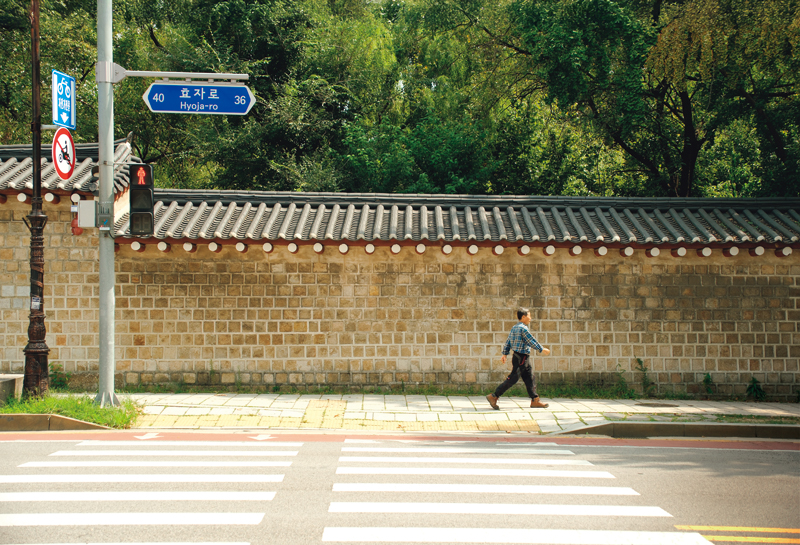
The western wall of Gyeongbok Palace stretches some 800 meters from Gyeongbokgung Station to Cheong Wa Dae Sarangchae, a museum and cultural space that showcases traditional Korean culture as well as the legacy of past Korean presidents. Yeongchumun, the palace’s west gate, is located about mid-way along the wall.
Seochon is not just an area of great natural beauty, it is an auspicious site, according to Korea’s traditional geomantic principles. It is surrounded by Mt. Bugak to the north, Mt. Inwang to the west, Gyeongbok Palace (the official palace of Joseon) to the east, and Sajikdan (a Neo-Confucian altar where rituals were once performed to pray for a good harvest and the nation’s peace and prosperity) to the south.
In fact, the neighborhood is one of the oldest in Seoul. In 1068, during the Goryeo Dynasty (918–1392), King Munjong (r. 1019–1083) initiated the construction of a temporary palace near the northern section of what are now the grounds of Gyeongbok Palace and Cheong Wa Dae, the former residence of South Korean presidents (also known as the Blue House). Located right next to the temporary palace, Seochon presumably developed around this time.
The neighborhood came into greater historical prominence with the construction of Gyeongbok Palace. After overthrowing the Goryeo Dynasty, King Taejo (r. 1392–1398) founded Joseon and relocated the capital to present-day Seoul in 1394. When the construction of Gyeongbok Palace was completed the following year, government institutions and residential areas were established in the vicinity. Among the various names Seochon went by during the Joseon Dynasty (1392–1910), Jang-dong (or Jangui-dong) was the most widely used.
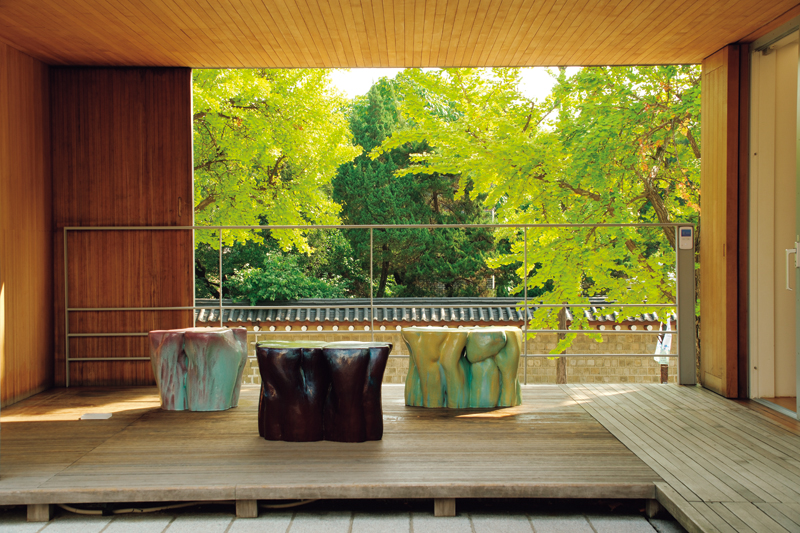
View of the palace wall around Yeongchumun, seen from the office of the Arumjigi Culture Keepers Foundation, a non-profit organization that works to protect and preserve Korea’s cultural heritage. Most of the buildings along the same street have a view of the palace wall.
Birthplace of Royalty
During the early Joseon period, the most famous place in Seochon was the home of Taejo’s fifth son, Yi Bang-won, who was enthroned as King Taejong (r. 1400–1418). At this private residence, believed to have been located in present-day Tongin-dong, four Joseon kings were born, including his son Sejong and two of his grandsons. As crown princes ordinarily lived in the royal palace, the fact that these descendants were born in a private residence means they were not initially in line to the throne.
Nonetheless, Taejong's son Sejong (r. 1418–1450), and grandsons Munjong (r. 1450–1452) and Sejo (r. 1455–1468), were successively crowned kings after Taejong staged a coup and took the throne. Among Joseon’s monarchs, Sejong left the greatest legacy. He created Hangeul, the Korean alphabet; expanded the country’s territory; and made advancements in science and technology.
During the early Joseon period, many other royal family members resided in Seochon, including Sejong’s son Grand Prince Anpyeong. His home is where An Gyeon, the foremost artist of the time, painted the famous Dream Journey to the Peach Blossom Land (Mongyu dowondo ). Commissioned by the prince himself, the painting depicts the paradise he saw in a dream. It is currently kept at Tenri Central Library in Japan.
In the late Joseon era, King Yeongjo (r. 1724–1776), regarded as the greatest king of this period, lived in Changui Palace in southern Seochon before ascending the throne. Even after his coronation, he frequented the palace and wrote several poems about his days there. He also built a shrine for his low-born mother in northern Seochon, which he visited often.

Opened in 1951, Daeo Bookstore is known as Seoul’s oldest bookstore. Currently operating as a café and cultural space, it is a Seochon hotspot.
Home of the Jangdong Kim Clan
One of Joseon’s most prominent scholar-officials from Seochon was Kim Sang-heon. He was adamant that the country fight back against the invasions of China’s Qing Dynasty. Portrayed by actor Kim Yoon-seok, the hardliner was one of the protagonists in the 2017 film The Fortress, directed by Hwang Dong-hyuk, best known for the Netflix original series Squid Game.
Not only did Kim rise to the highest scholar-official rank, his descendants also held positions of power. In fact, his family formed the core of the most powerful faction of the late Joseon period, and produced many government officials, including 15 jeongseung (prime ministers and deputy prime ministers) and 35 panseo (cabinet ministers). Originally from Andong in North Gyeongsang Province, the family was better known as the Jangdong Kim clan because Kim and his brothers lived in Seochon, then known as Jang-dong. The neighborhood became famous through Kim’s numerous writings, including a collection of ten poems on its most scenic spots, a record of his exploration of Mt. Inwang, and a poem about longing for his home, which he wrote while being held captive in Qing China.
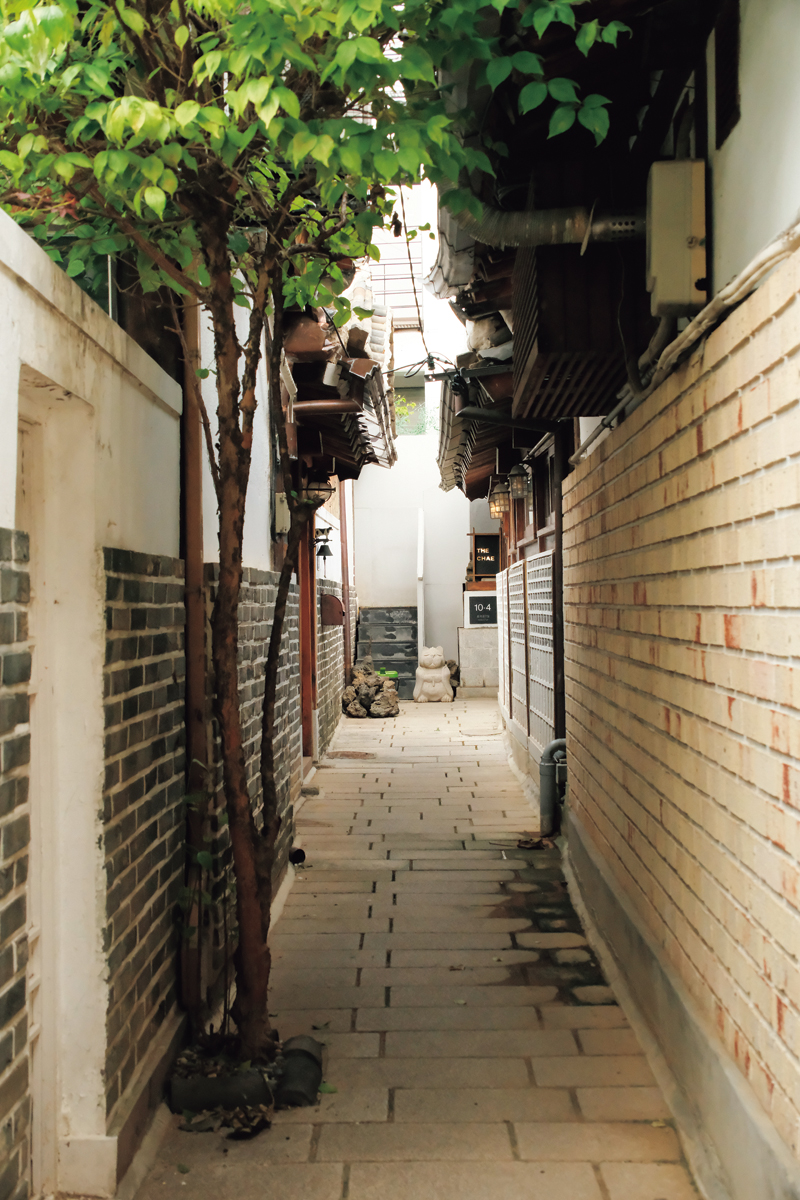
The main roads around Seochon are lined with tall buildings, but turning into the network of alleys is like stepping into the past.
In addition to political clout, the Jangdong Kim clan had heavy influence in the cultural sphere. Kim’s great-grandsons were patrons of Jeong Seon, one of the most celebrated landscape painters of late Joseon. In appreciation of their patronage, Jeong depicted the scenery of Seochon in the Album of Eight Scenic Sites of Jang-dong in Seoul (Jangdong palgyeong) . In his later years, he produced the masterpiece Scene of Inwang Mountain After Rain (Inwang jesaekdo), which depicts the mountain as viewed from present-day Bukchon, the neighborhood north of Gyeongbok Palace.
Meanwhile, developments in commerce and weakening class distinctions in the later Joseon period elevated the social status of the jungin (the “middle class,” between the yangban nobility and the commoners), the low-ranking officials living in south-central Seochon. With increased educational opportunities, they gradually adopted the elite culture of the yangban. Many engaged in literary activities, such as regular poetry gatherings around Ogin-dong, the neighborhood near Mt. Inwang that was home to the literati. The most famous of these gatherings was the Songseogwon Sisa (Pine Garden Club of Poets), which played a pivotal role in propagating the literature of the jungin as opposed to that of the literati and nobility. This poetry society published several anthologies and was active until the early 19th century, leading the heyday of jungin literature.
Seochon in the Modern Era
During the Japanese colonial period (1910–1945), pro-Japanese collaborators built large houses in Seochon. Most notably, Yun Deok-yeong, who was involved in the signing of the Korea-Japan Treaty of 1910, constructed a Western-style mansion of around 800 pyeong (approx. 2,645 square meters), known as the largest private residence of that time. It was built in the very place where Joseon nobles enjoyed the arts and music and the jungin held poetry gatherings. Although the mansion burnt down in 1966, the Western-style house that Yun built for his daughter and the hanok (traditional Korean house) where his concubine lived still remain. While his daughter’s house has been turned into the Jongno Pak No-soo Art Museum, the Seoul Metropolitan Government plans to remodel the hanok and open it to the public.
During the Japanese occupation and after Korea’s liberation, Seochon became a hub of cultural activity for renowned poets, writers, and artists who left an enduring mark on the history of Korean literature and art. Some of the biggest literary names from among these include Yi Sang, known for his avant-garde poems, novels, and essays, as well as Yi Yuksa and Yun Dong-ju, who dedicated their poetry to the independence movement. Prominent artists who were active in Seochon include Gu Bon-ung, a friend of Yi Sang; Lee Quede, who unleashed a powerful energy on the canvas; and Lee Jung-seob, whose paintings are infused with rural lyricism.
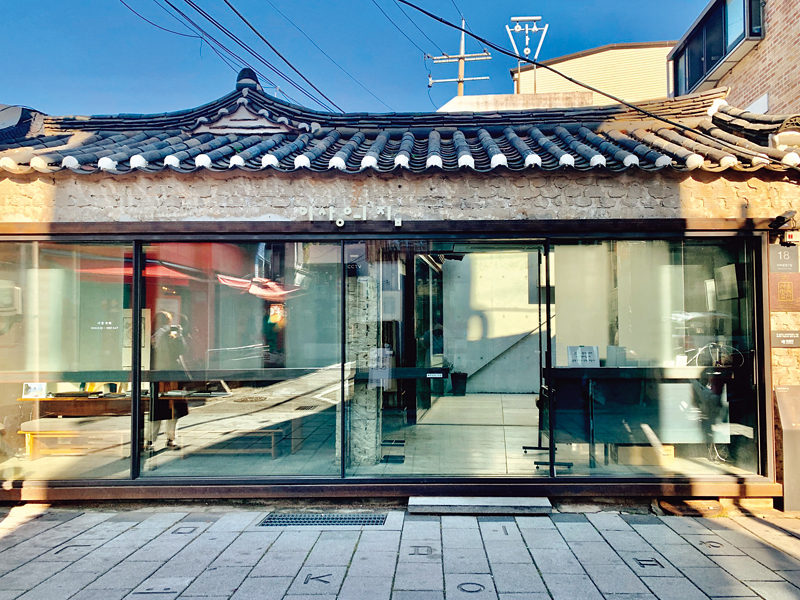
The house where Yi Sang (1910–1937) — a renowned poet, writer, and architect who left an indelible mark on modern Korean literature — lived for some twenty years. It was saved from demolition when the National Trust for Cultural Heritage purchased the house in 2009 with public donations and corporate contributions. Along one of the inside walls, an archive of Yi’s works is displayed chronologically.
ⓒ The Federation of Korean Cultural Centers
The most significant historical event that Seochon witnessed was the April 19 Revolution in 1960. In protest against then President Syngman Rhee and his rigged reelection, students and citizens marched to Gyeongmudae (the current site of Cheong Wa Dae). Police opened fire on crowds of protestors in the area around the Cheong Wa Dae Fountain Plaza and Hyoja-ro, fanning the flames of the revolution.
Along with Bukchon, Seochon had been one of the most prized residential areas in Seoul since the Joseon Dynasty, but it fell into decline during the 1960s and 1970s under Park Chung-hee's military rule as tightened security around Cheong Wa Dae imposed tougher restrictions on the neighborhood. They were lifted following the nationwide democratization movement of 1987. Later, in 2010, the government started providing support for neighborhoods with traditional houses, allowing Seochon, with its vibrant blend of nature, history, and culture, to flourish once more as one of the most popular destinations in Seoul.
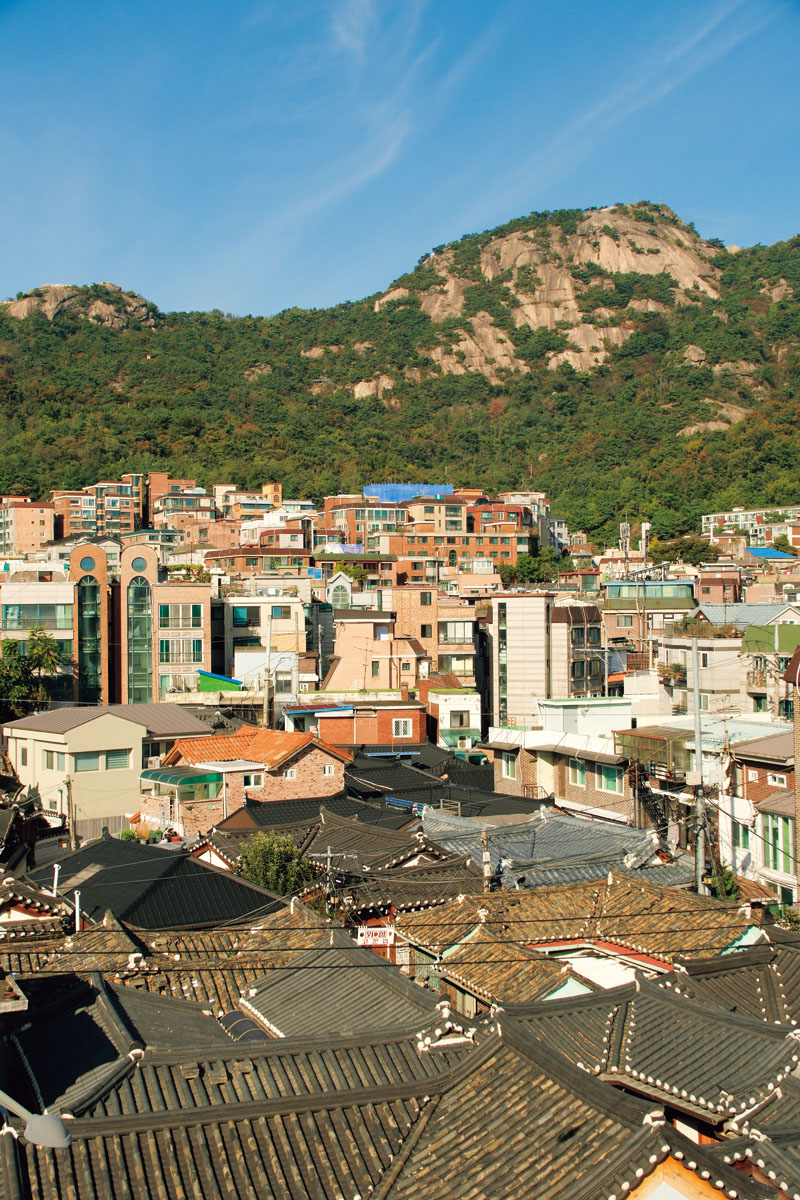
Seochon is characterized by the harmonious mix of modernized hanok built in the 1920s and 1930s and contemporary structures. Mt. Inwang, the neighborhood landmark, looms in the background.
KIM Kyuwon Senior Reporter, Hankyoreh21
Choi Tae-wonPhotographer